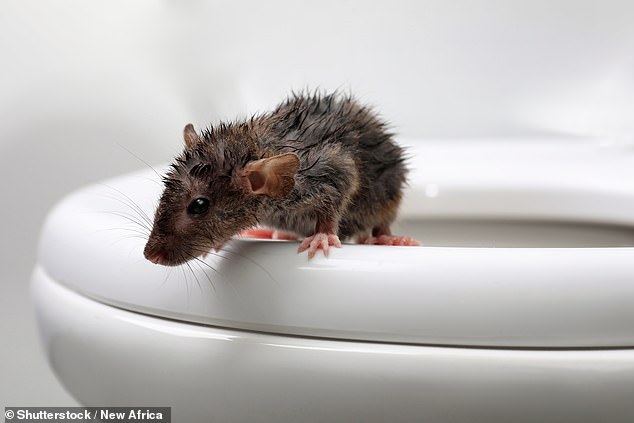<!–
<!–
<!– <!–
<!–
<!–
<!–
A man going to the bathroom in Canada was bitten and infected by a rat that came out of the toilet bowl.
The 76-year-old man suffered bites on two fingers while trying to remove the rodent and was rushed to hospital for treatment.
His wounds were dressed and he was discharged, but he returned 18 days later complaining of fever, headaches and abdominal pain and was admitted to the ICU.
That’s when doctors ran tests that revealed he had been infected with leptospirosis, a bacteria found in rat urine, and also discovered he had warning signs of multiple organ failure and sepsis.
He was quickly given antibiotics and after a few days he had recovered enough to return home.

The individual, 76, from Canada, tried to remove the rodent quickly, but suffered bites on two fingers and was rushed to hospital for treatment (file image).
Doctors suggested that the rat that bit the man may have recently urinated and then “contaminated his oral cavity” with urine.
He then bit the man, directly transferring bacteria from his urine into his bloodstream.
Leptospirosis infections are not common in the US, with only 100 to 150 diagnosed each year, up to 15 percent of which are fatal.
Transmission typically occurs after people unknowingly touch rat urine or water contaminated with rat urine, although transmission through bites has previously been reported.
The strange case was revealed by doctors in Quebec in the Journal of the Canadian Medical Association.
The doctor wrote in the magazine to highlight that rat bites can cause leptospirosis, which can be difficult to diagnose.
They also wanted to suggest that antibiotics could be given soon after a bite to prevent infection.
“Although preventive antibiotic therapy after a rat bite remains an unresolved issue,” they wrote, “rat bites may warrant antibiotic prophylaxis because they regularly cause rat bite fever and create puncture wounds that have a higher risk of infection”.
Antibiotic prophylaxis refers to the use of an antibiotic to prevent an infection in people who are at risk of developing it.
In this case, the man was treated with 500 mg of amoxicillin administered three times a day for 14 days.
He also received a tetanus shot on his first hospital visit, and on his second trip he also received an intravenous drip to administer fluids and immunoglobulin, or a blood product that contains antibodies to fight infections.
The man also suffered kidney damage, doctors said, which may have been caused by a bacterial infection that traveled through the blood to the kidneys.
Symptoms of a leptospirosis infection include high fever, headache, muscle aches, abdominal pain, and yellowing of the eyes (jaundice).
It is commonly diagnosed by testing patients’ blood for antibodies against the disease.
The disease is usually treated with antibiotics to kill the bacteria.
